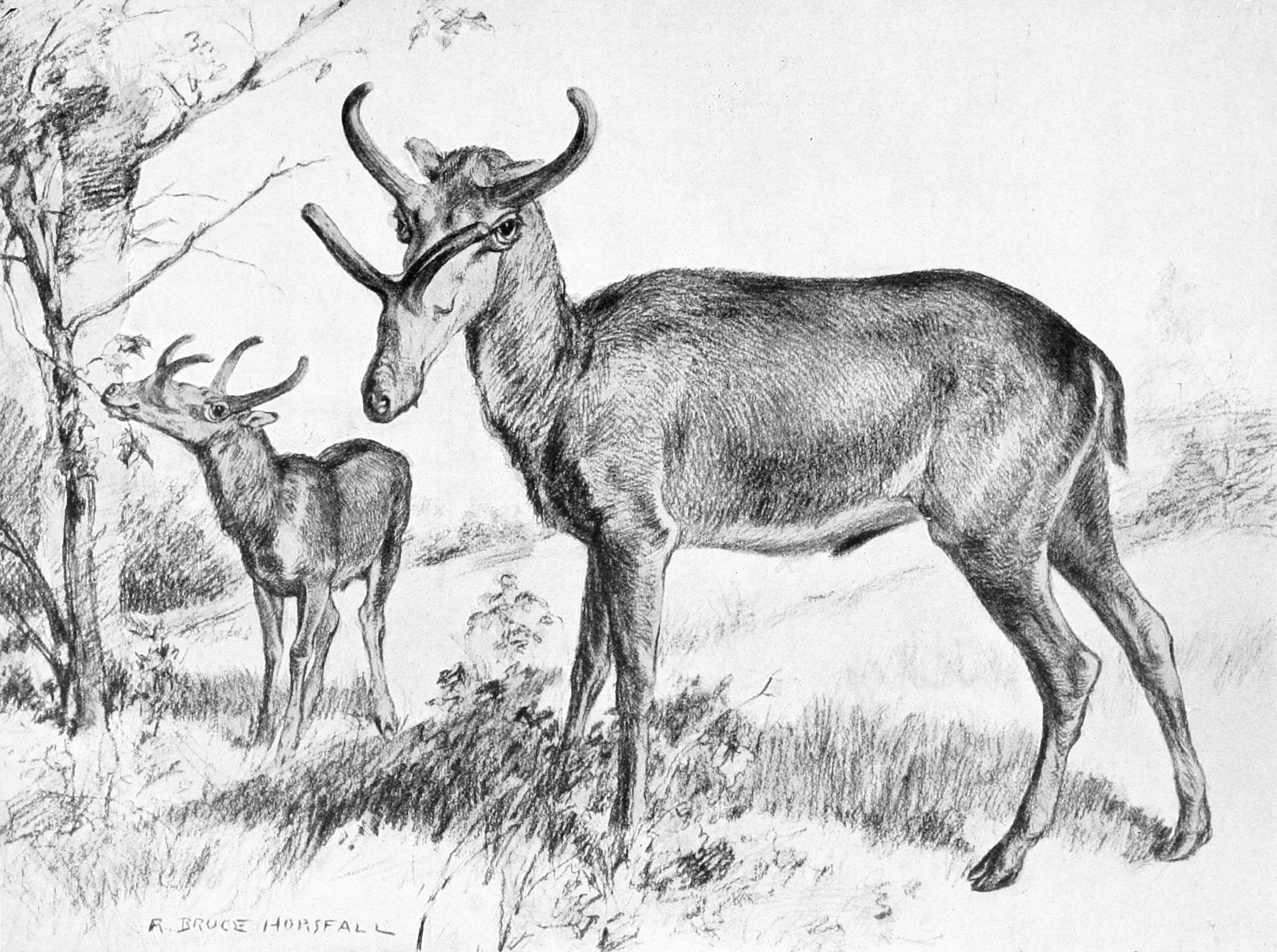Syndyoceras on:
[Wikipedia]
[Google]
[Amazon]
''Syndyoceras'' is a small

 ''Syndyoceras'' was named by Barbour (1905). Its type is ''Syndyoceras cooki''. It was assigned to Protoceratidae by Barbour (1905) and Carroll (1988); and to Kyptoceratini by Webb (1981), Prothero (1998), Webb ''et al.'' (2003) and Prothero and Ludtke (2007).
''Syndyoceras'' was named by Barbour (1905). Its type is ''Syndyoceras cooki''. It was assigned to Protoceratidae by Barbour (1905) and Carroll (1988); and to Kyptoceratini by Webb (1981), Prothero (1998), Webb ''et al.'' (2003) and Prothero and Ludtke (2007).
extinct
Extinction is the termination of an organism by the death of its Endling, last member. A taxon may become Functional extinction, functionally extinct before the death of its last member if it loses the capacity to Reproduction, reproduce and ...
genus
Genus (; : genera ) is a taxonomic rank above species and below family (taxonomy), family as used in the biological classification of extant taxon, living and fossil organisms as well as Virus classification#ICTV classification, viruses. In bino ...
of Artiodactyla
Artiodactyls are placental mammals belonging to the order (biology), order Artiodactyla ( , ). Typically, they are ungulates which bear weight equally on two (an even number) of their five toes (the third and fourth, often in the form of a hoof ...
, of the family Protoceratidae, endemic
Endemism is the state of a species being found only in a single defined geographic location, such as an island, state, nation, country or other defined zone; organisms that are indigenous to a place are not endemic to it if they are also foun ...
to central North America
North America is a continent in the Northern Hemisphere, Northern and Western Hemisphere, Western hemispheres. North America is bordered to the north by the Arctic Ocean, to the east by the Atlantic Ocean, to the southeast by South Ameri ...
from the Miocene
The Miocene ( ) is the first epoch (geology), geological epoch of the Neogene Period and extends from about (Ma). The Miocene was named by Scottish geologist Charles Lyell; the name comes from the Greek words (', "less") and (', "new") and mea ...
epoch (23.1—18.5 Ma), existing for approximately .
Taxonomy

 ''Syndyoceras'' was named by Barbour (1905). Its type is ''Syndyoceras cooki''. It was assigned to Protoceratidae by Barbour (1905) and Carroll (1988); and to Kyptoceratini by Webb (1981), Prothero (1998), Webb ''et al.'' (2003) and Prothero and Ludtke (2007).
''Syndyoceras'' was named by Barbour (1905). Its type is ''Syndyoceras cooki''. It was assigned to Protoceratidae by Barbour (1905) and Carroll (1988); and to Kyptoceratini by Webb (1981), Prothero (1998), Webb ''et al.'' (2003) and Prothero and Ludtke (2007).
Morphology
Theskull
The skull, or cranium, is typically a bony enclosure around the brain of a vertebrate. In some fish, and amphibians, the skull is of cartilage. The skull is at the head end of the vertebrate.
In the human, the skull comprises two prominent ...
decoration of ''Syndyoceras'' looked quite unlike those of a deer. It had two pairs of horns. The first was a V-shaped pair on the snout, fused at the base. The second pair was placed between the eyes and the ears and was curved inwards, the horns facing towards each other in a semicircular shape. Like giraffe
The giraffe is a large Fauna of Africa, African even-toed ungulate, hoofed mammal belonging to the genus ''Giraffa.'' It is the Largest mammals#Even-toed Ungulates (Artiodactyla), tallest living terrestrial animal and the largest ruminant on ...
ossicones, these protrusions were covered with skin
Skin is the layer of usually soft, flexible outer tissue covering the body of a vertebrate animal, with three main functions: protection, regulation, and sensation.
Other animal coverings, such as the arthropod exoskeleton, have different ...
. They were probably used for display and fighting.
In addition to the horns, ''Syndyoceras'' also possessed tusk-like canine teeth, that it may have used to root through soil and undergrowth for food, in a similar manner to a modern musk deer
Musk deer can refer to any one, or all eight, of the species that make up ''Moschus'', the only extant genus of the family (biology), family Moschidae. Despite being commonly called deer, they are not true deer belonging to the family Cervidae, b ...
. The shape of the skull also suggests that it may have had an inflated muzzle, like that of a modern saiga.
The , creature closely resembled a deer
A deer (: deer) or true deer is a hoofed ruminant ungulate of the family Cervidae (informally the deer family). Cervidae is divided into subfamilies Cervinae (which includes, among others, muntjac, elk (wapiti), red deer, and fallow deer) ...
, having two hooved toes and reaching a weight over 60 kg. Like early horse
The horse (''Equus ferus caballus'') is a domesticated, one-toed, hoofed mammal. It belongs to the taxonomic family Equidae and is one of two extant subspecies of ''Equus ferus''. The horse has evolved over the past 45 to 55 mi ...
s, such as ''Merychippus
''Merychippus'' is an extinct proto-horse of the family Equidae that was endemic to North America during the Miocene, 15.97–5.33 million years ago. It had three toes on each foot and is the first horse known to have Grazing (behaviour), grazed ...
'', it had two vestigial
Vestigiality is the retention, during the process of evolution, of genetically determined structures or attributes that have lost some or all of the ancestral function in a given species. Assessment of the vestigiality must generally rely on co ...
outer toes on each foot, which did not touch the ground.
References
Synthetoceratinae Miocene Artiodactyla Aquitanian genus extinctions White River Fauna Miocene mammals of North America Chattian genus first appearances Fossil taxa described in 1905 Monotypic prehistoric Artiodactyla genera {{paleo-eventoedungulate-stub